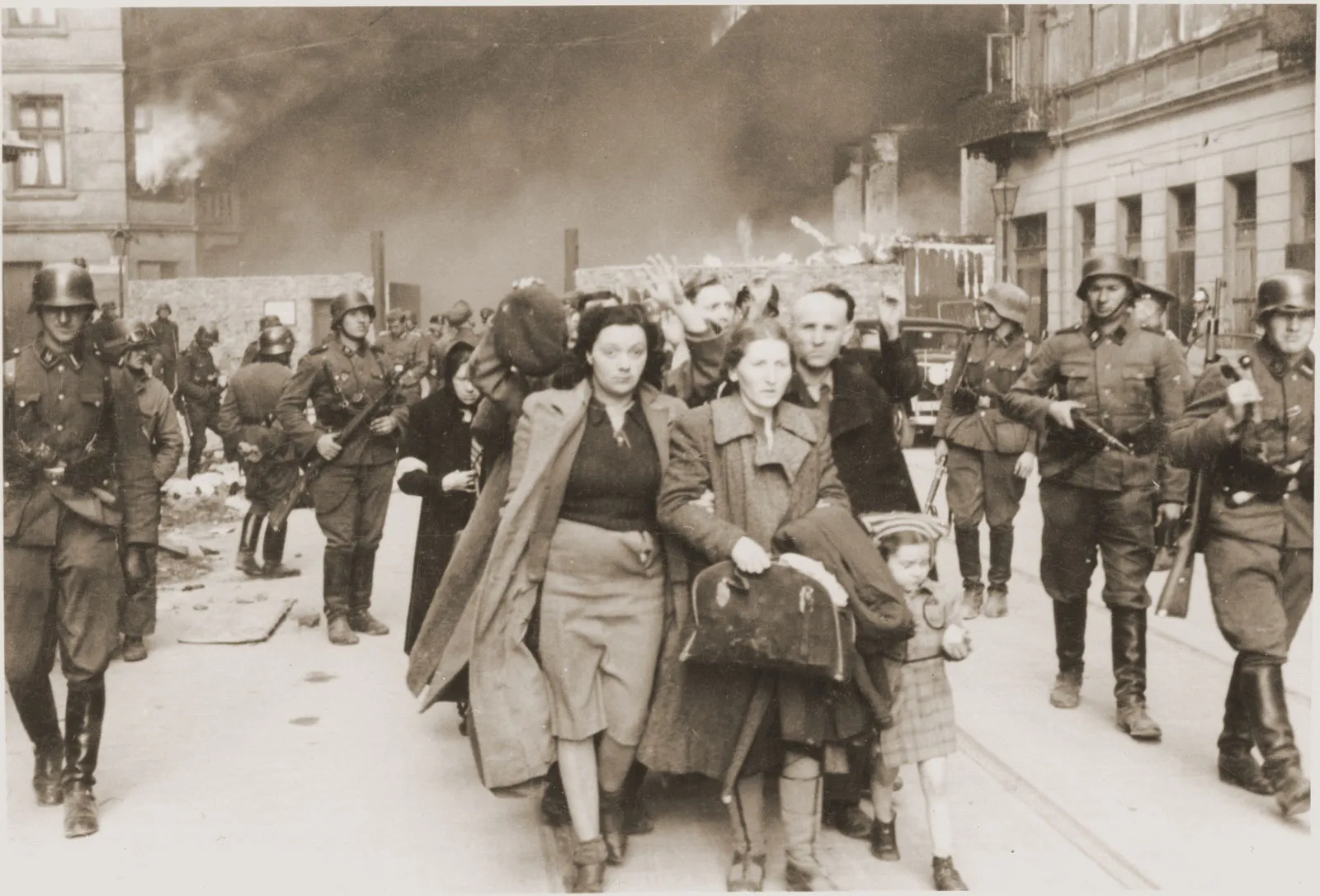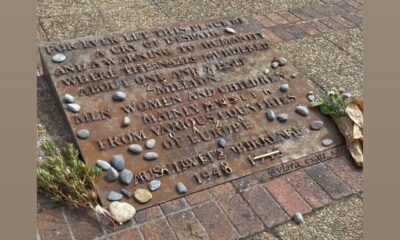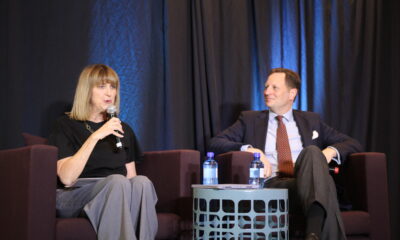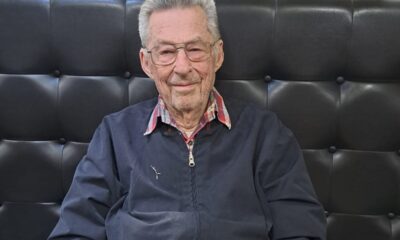
Featured Item

Warsaw Ghetto doctors determined and heroic
Published
2 years agoon
When we hear the words “medicine” and “the Holocaust”, we generally think of Nazi doctors and their inhumane crimes.
However, there were numerous Jewish and other doctors who “resisted the Nazis in their own way, without weapons, but with knowledge and unbelievable power, they struggled to save lives that the Nazis thought were unworthy,” said Dr Maria Ciesielska, the author of, The Doctors of the Warsaw Ghetto.
They did this by continuing to treat people, smuggling drugs, and inventing new therapies or vaccinations. “They continued to do research and medical education,” said Ciesielska. “They must have been superhuman. My father said, ‘It always brings me to tears what our colleagues did in conditions like hell.’”
Ciesielska was speaking on 18 September during a Johannesburg Holocaust & Genocide Centre (JHGC)-organised webinar about the Jewish doctors of the Warsaw Ghetto during World War II.
Jews in the Warsaw Ghetto lived without knowing what the future might bring, said Ciesielska. “The only certainty was that the next day would be worse. The goals of everyone in the ghetto, physicians included, was stabilisation and survival. The conditions of treatment of sick people in hospitals in the ghetto as well as of those who were deported to dispensaries were deteriorating from week to week because of a total deficiency of medication, dressings, and medical tools, as well as hunger and a typhus epidemic.”
When rumours about the deportation took hold, and everyone began to sense that the end was near, the pressure on every ghetto inhabitant intensified, said Ciesielska. “Life and death hung in the balance. ‘Where will they send us?’ To medical personnel, this issue was professional and personal. What does a doctor do with his or her family? What does a physician do with his or her patients? Medical ethics were even more challenged from then on.”
Between 22 July and 29 September 1942, at least 265 000 Warsaw Jews were deported to the Treblinka death camp near the city, said Ciesielska. “There was no selection there. All were condemned to death.
“The Jewish doctors working in the Warsaw Ghetto, as well as their families and patients, were transported to their final destination in overcrowded, sealed boxcars, in which they battled to breathe. Some chose to end their lives by committing suicide, or they helped others to die.”
However, 40 000 were spared thanks to the Germans issuing numerki zycia (tickets to live) – small cards with a stamp declaring that the bearer was entitled to live.
“On 12 September, four patients and remaining hospital personnel boarded the boxcars, even those who had tickets, to attend to the patients to the very end,” said Ciesielska. “A number of doctors left the Warsaw Ghetto to hide on the Aryan side, but not everyone found the promised help on the other side. Those who decided to remain in the ghetto began preparing bunkers. All hideouts quickly filled up during the first days of the Ghetto Uprising that began on 19 April 1943. Unfortunately, the Germans discovered the shelter after a couple of days, and called for everyone to leave the shelter, promising them a safe exit.
“On 21 April, three doctors and their wives responded to the Germans’ call. They were brought to the Umschlagplatz [the departure point in Warsaw from which hundreds of thousands of Jews were deported to Nazi extermination camps].”
Luc Albinski spoke about how his grandmother and her family left Warsaw on a train when the city was being besieged by the east. When the train stopped, they went to a hotel nearby, consequently waking up the Soviets there. The hotel manager destroyed the guest book to prevent them from being identified. They eventually walked back to Warsaw, now Nazi-occupied.
Albinski’s late Polish, Catholic grandfather, Waclaw, lived in the suburb of Wlochy, which didn’t participate in the Warsaw Uprising of 1944, but Germans arrested a few thousand men there, so Waclaw ended up in Auschwitz and died in Buchenwald on 28 September 1944.
Albinski’s great uncle, Mietek, fought in the Warsaw Uprising, ended up in Germany, and never returned to Poland, where it was too dangerous for him.
“In 1990, I made my first trip to Poland still completely unaware of the Jewish side of my family,” said Albinski. “My cousins spoke about how my Polish-Jewish grandmother [Halina Rotstein, a doctor in the Warsaw Ghetto] took control of everything in a hospital and then helped the patients transport themselves to the death trains. This was a huge shock for me.”
Polish-born Holocaust survivor and doctor, Michael Katz, lost his entire family in the Holocaust, but he escaped the Janowska concentration camp and lived as a Roman Catholic in Warsaw, became a member of the resistance, and fought in the Warsaw Uprising.
“The late doctor, Myron Winick, my colleague in medical school, brought with him from a visit to Warsaw an original text of a book called Hunger Disease, created by a variety of physicians working in ghetto circumstances and suffering themselves,” said Katz. “The quantity of food offered per person in the Warsaw Ghetto was insufficient to support life. That remarkable book was by people who knew that they were dying, but wanted to leave the scientific information, and devoted themselves with a great deal of perfection to documenting it.”
Katz also mentioned that Polish doctor Janusz Korczak, whose real name was Henryk Goldszmit, wrote wonderful short stories and tales for children. “He was offered an opportunity to be saved by the Germans, but refused, and went to Treblinka, where he was killed by an injection of phenol into his heart.”
Tali Nates, the director of the JHGC, lauded the heroism and resistance shown by those who turned down the chance to avoid death camps. “Many of the doctors and heads of orphanages in the Warsaw Ghetto were offered a way out. Dr Rotstein, after smuggling her four little children, was offered a way out many times, but chose to stay with her patients by going to Treblinka, knowing full well what Treblinka meant in September 1942.”










